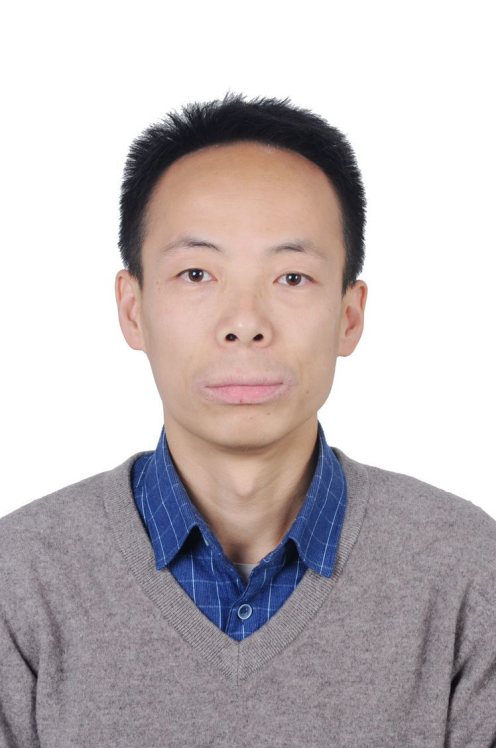
LI Hong
PhD, Associate Professor
Office: 304 at Environment Hall
Email: hongli@cqu.edu.cn
Education
● 2010 – 2014: PhD in Environmental Engineering, Research Center for Eco-Environmental Sciences, Chinese Academy of Sciences, Beijing, China.
● 2007 – 2010: M.S. in Plant Nutrition, Zhejiang University, Hahznghou, China.
● 2003 – 2007: B.E. in Agriculture, Southwest University, Chongqing, China.
Research Description
Dr. Li is a freshwater ecologist with particular interest in biogeochemical processes in lakes, rivers and reservoirs. He is currently the Head of Department of Ecological Science and Engineering, Deputy Director of The Institute of Urban Environmental Evolution and Ecological Restoration in Chongqing University, China. His research interests are in controlling of toxic algal blooms and water pollution using cost-effective and ecological approaches; the fate, behavior, effects and risk assessment of emerging pollutants in Environments. Currently, as a key member, Dr. Li participated the National Key R&D Program of China (2017YFC0404700, leaded by Prof. Hongxiang Chai) and National Natural Science Foundation of China (51779020, leaded by Prof. Qiang He in Chongqing University). In addition, Dr. Li leaded two National Natural Science Foundation. Dr. Li is also the author of over 50 peer-reviewed publications.
Publications
● Liu et al., Sustainable modulation of anaerobic malodorous black water: The interactive effect of oxygen-loaded porous material and submerged macrophyte, Water Research, 2019, 160: 70-80 (Corresponding author).
● Li et al., Simultaneous Microcystis Algicidal and microcystin Degrading Capability by a Single Acinetobacter Bacterial Strain,Environmental Science & Technology, 2016, 50(21): 11903-11911 (First author).
● Li, et al., Simultaneous Removal of Harmful Algal Blooms and microcystins using Microorganism- and Chitosan-Modified Local Soil, Environmental Science & Technology, 2015, 49(10):6249-6256 (First author).
● Kang et al., Interactions between suspended particulate matter and algal cells contributed to the reconstruction of phytoplankton communities in turbulent waters, Water Research, 2019, 149: 251-262 (Corresponding author).
● Xu et al., Underestimated methane production triggered by phytoplankton succession in river-reservoir systems: evidence from a microcosm study, Water Research, 2020, 185: 116233 (Co-first author).
● Liu et al., Potassium supplement enhanced cadmium removal in a Microcystis aeruginosa photobioreactor: Evidence from actual and simulated wastewater, Journal of Hazardous Materials, 2021, available online (Corresponding author).
● He et al., Potassium regulates cadmium toxicity in Microcystis aeruginosa, Journal of Hazardous Materials, 2021, 413: 125374 (Corresponding author).
● He et al., Spatiotemporal distribution and potential risk assessment of microcystins in the Yulin River, a tributary of the Three Gorges Reservoir, China, Journal of Hazardous Materials, 2018, 347: 184-195 (Corresponding author).
● He et al., Potassium regulates the growth and toxin biosynthesis of Microcystis aeruginosa. Environmental Pollution, 2020, 115576 (Corresponding author).
● He et al., Cytotoxic effects of polystyrene nanoplastics with different surface functionalization on human HepG2 cells. Science of The Total Environment, 2020, 723, 138180 (Corresponding author).
● Mao et al., Phytoplankton response to polystyrene microplastics: Perspective from an entire growth period, Chemosphere, 2018, 208:59-68 (Corresponding author) (Highly cited papers)
● Li et al., The role of turbulence in internal phosphorus release: Turbulence intensity matters, Environmental Pollution, 2019, 252, 84-93 (Corresponding author).
● Zhou et al., Using flocculation and subsequent biomanipulation to control microcystis blooms: A laboratory study, Harmful Algae, 2020, 99:101917 (Corresponding author).
Projects, Patents, and Awards
● NSFC 41877472,Hydrodynamic mediated influence of microplastic on the environmental behavior of microcystins:the multiple mechanisms study,2019.01-2022.12;
● NSFC 51609024,Impact of suspended sediment on the environmental behavior of cyanotoxins under flow turbulence condition: the mechanism study, 2017.01-2019.12……